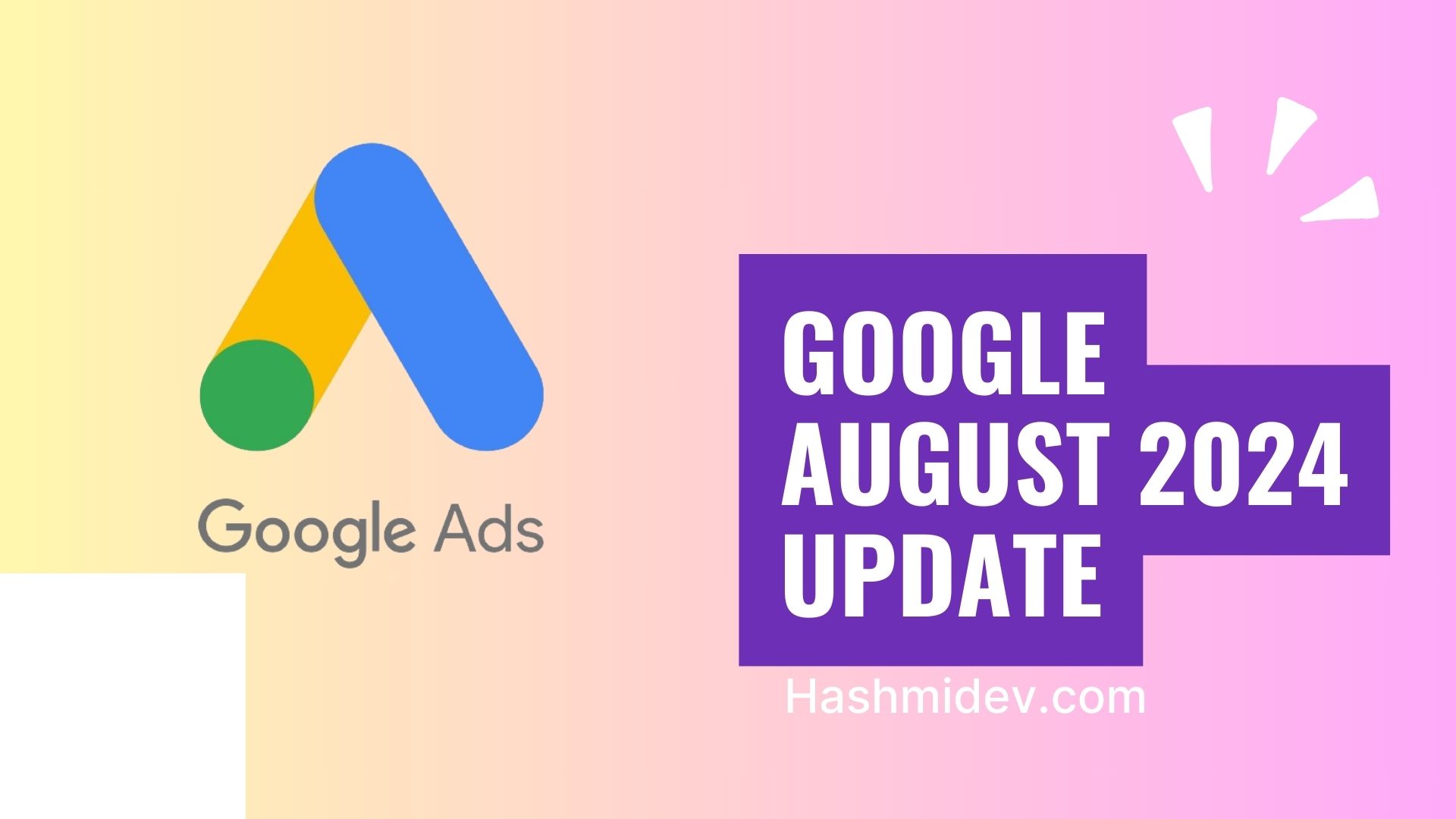Introduction
In the rapidly changing world of digital marketing, staying up-to-date with Google’s algorithm updates and policy changes is crucial for maintaining visibility and effectiveness. The August 2024 updates bring significant changes to both search algorithms and advertising policies, impacting how content is ranked and how ads are managed, particularly in regional contexts. This blog will provide a comprehensive overview of these updates, practical insights on adapting to them, and strategies for leveraging the changes to your advantage.
Understanding the August 2024 Core Update
Problem: The Shift Towards Genuine Value
Google’s core updates are pivotal in refining search results and improving user experience. The August 2024 core update continues this trend by emphasizing the importance of content that provides genuine value over content crafted primarily for SEO purposes. For businesses and content creators, this shift means reevaluating and adapting content strategies to meet new standards.
Why This Matters: Websites and content creators have long relied on various SEO tactics—such as keyword optimization and link building—to improve search rankings. While these tactics are still relevant, Google’s August update highlights the need for content that offers real value to users. Content that merely aims to rank well without addressing user needs may see decreased visibility.
Agitate: The Impact on Your Content Strategy
Consider the scenario where you’ve invested considerable resources into developing a robust SEO strategy, only to find that your rankings have dropped significantly. This can be disheartening, especially when the content you’ve created was optimized according to previous SEO best practices. The August 2024 update intensifies the pressure on businesses and content creators to align with Google’s evolving criteria.
For small businesses and independent content creators, adapting to these new standards can be particularly challenging. They may lack the resources to conduct extensive content overhauls or the expertise to navigate the updated algorithm effectively. The fear of falling behind larger competitors who can quickly adjust their strategies is a real concern.
Solution: Adapting to the New Standards
To successfully navigate the August 2024 core update, focus on creating content that genuinely helps users. Here’s how you can adapt:
1. Emphasize User Value: Shift your focus from purely SEO-driven content to content that provides real, actionable value to your audience. Address common questions, solve problems, and offer in-depth insights.
2. Regularly Update Content: Google rewards content that evolves and improves over time. Regularly review and update your content to ensure it remains relevant and valuable.
3. Monitor and Adapt: Utilize tools such as Google Analytics and Google Search Console to track how your content performs under the new update. Adjust your strategies based on the data you collect.
Case Study: A small tech blog focused on providing comprehensive, user-centric reviews saw a 30% increase in organic traffic within two months of implementing a user-focused content strategy. By prioritizing in-depth reviews and actionable insights over keyword optimization, they improved their rankings and engaged their audience more effectively.
Expert Opinion: According to SEO expert Rand Fishkin, “The key to thriving under Google’s new updates is to prioritize user intent and value. The days of focusing solely on SEO tactics are over. Content must now resonate with users and provide genuine benefits.”
Impact on Content Creators and SEO Strategies
Problem: Evolving SEO Practices
The August 2024 core update has significant implications for SEO practices. Traditional SEO strategies, such as keyword stuffing and link building, are no longer sufficient on their own. Content creators must now balance SEO with a focus on user engagement and value.
What’s at Stake: Websites that have relied heavily on traditional SEO tactics may see their rankings suffer. The shift towards valuing user experience and content quality means that a comprehensive approach to SEO, integrating user needs and preferences, is essential.
Agitate: Adapting to New Expectations
The challenge of adapting to these new expectations can be overwhelming. Content creators must not only produce high-quality content but also continuously adjust their strategies to align with Google’s evolving criteria. The risk of falling behind in search rankings creates anxiety and uncertainty, particularly for those who are used to relying on established SEO practices.
Solution: Modernizing Your SEO Approach
To effectively adapt to the August 2024 update, modernize your SEO strategy by integrating user value with traditional practices. Here’s how:
1. Focus on User Experience: Ensure that your content is not only well-written but also easy to navigate. A positive user experience contributes to higher engagement and better rankings.
2. Integrate SEO and User Value: Combine traditional SEO techniques with a focus on delivering valuable content. Use SEO to enhance the visibility of high-quality content rather than manipulating rankings.
3. Leverage Data: Use analytics tools to understand user behavior and preferences. Tailor your content based on these insights to improve engagement and effectiveness.
Case Study: A digital marketing agency that shifted from keyword-heavy articles to user-focused content saw a substantial improvement in engagement metrics. By incorporating user feedback and focusing on valuable insights, they managed to boost their content’s performance and relevance.
Expert Opinion: “Adapting to Google’s new content standards requires a shift in focus from optimization alone to a more holistic approach that values user engagement and experience,” notes digital marketing consultant Jane Doe.
Google ads Regional Restrictions under the Political Content Policy
Problem: Navigating New Advertising Restrictions
In addition to the core update, Google has introduced new regional restrictions for political content, particularly affecting advertisers in Canada. These changes impose specific limitations on how political advertising can be conducted on Google’s platforms.
Key Restrictions:
– Pre-Campaign Period: Ads sponsored by third parties that promote or oppose political parties or candidates in British Columbia are prohibited.
– Campaign Period: Ads that promote or oppose political entities or candidates, or take a position on related issues, are restricted. Exceptions include ads from news organizations and those promoting public health or electoral processes.
Why This Matters: For businesses and advertisers in affected regions, these restrictions can complicate campaign planning and execution. Ensuring compliance while maintaining campaign effectiveness is a significant challenge.
Agitate: The Challenges of Compliance
Adapting to these new restrictions can be complex and daunting. Advertisers must navigate a maze of regulations while trying to maintain the effectiveness of their campaigns. The risk of non-compliance, along with the challenge of developing alternative strategies, adds to the pressure.
Solution: Strategies for Compliance and Effectiveness
To effectively navigate the new political content restrictions, consider the following strategies:
1. Understand the Regulations: Familiarize yourself with the specifics of the new policy. Ensure that all advertising content complies with the guidelines to avoid penalties.
2. Alternative Approaches: Shift your focus from direct political promotion to educational content or public service announcements that align with the allowed exceptions.
3. Consult with Experts: Work with legal and advertising experts to ensure compliance and to develop effective strategies within the new framework.
Case Study: A Canadian advocacy group adapted to the new restrictions by focusing on educational content about electoral processes rather than direct political ads. This approach not only complied with the regulations but also engaged their audience effectively, leading to increased visibility and positive feedback.
Expert Opinion: “Navigating new advertising rules requires a strategic approach. By understanding the regulations and focusing on compliant content, advertisers can continue to reach their audience effectively,” says advertising strategist John Smith.
New Advertising Landscape
Problem: Adapting to Evolving Advertising Rules
With the introduction of new regional restrictions, businesses and advertisers must adapt their strategies to stay compliant while remaining effective. The evolving landscape presents a challenge for those accustomed to previous advertising practices.
What’s at Risk: Non-compliance with the new rules can result in penalties or the removal of ads. For advertisers, this means rethinking campaign strategies and ensuring all content meets the new requirements.
Refrence Google Update
Agitate: The Complexity of Compliance
The complexity of adhering to these new rules can be overwhelming. Advertisers must navigate regulatory changes while trying to maintain campaign effectiveness. The risk of making mistakes or missing important compliance details adds to the stress.
Solution: Effective Compliance Strategies
Here’s how to navigate the new advertising landscape effectively:
1. Thorough Research: Conduct detailed research on the new policy to understand its implications fully. This includes reviewing official guidelines and consulting with experts.
2. Adapt Campaigns: Modify your advertising campaigns to align with the new restrictions. Focus on creating compliant content that still resonates with your audience.
3. Monitor and Review: Continuously monitor your campaigns to ensure ongoing compliance and effectiveness. Use performance data to adjust as needed.
Expert Opinion: “Successful adaptation to new advertising regulations involves a proactive approach. By staying informed and flexible, advertisers can effectively manage their campaigns within the new framework,” advises digital marketing expert Lisa Brown.
Industry Insights and Future Implications
Trends and Predictions
The August 2024 updates reflect broader trends in digital marketing and advertising. The emphasis on content quality and user experience aligns with ongoing trends toward more personalized and valuable digital experiences. Advertisers and content creators should anticipate further shifts in these areas as Google continues to refine its algorithms and policies.
Trend Analysis: The move towards prioritizing user value over SEO tactics is part of a larger trend towards user-centric digital experiences. This includes greater emphasis on personalized content, improved user engagement, and higher standards for content quality.
Future Implications: Preparing for What’s Next
Looking ahead, businesses and content creators should prepare for ongoing changes in digital marketing. This includes staying informed about future updates and trends, continuously adapting strategies, and embracing new opportunities for engagement.
Future Outlook: As Google continues to refine its algorithms, businesses will need to stay agile and responsive. This includes being






